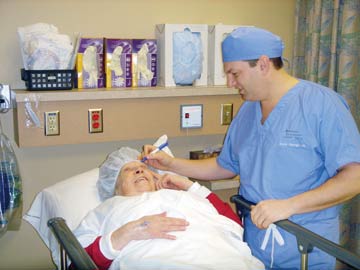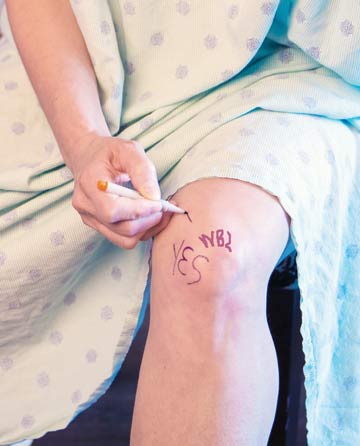Death, taxes and surgeons marking surgical sites before patients are wheeled into surgery. That's how much certainty Pamela Borello-Barnett, RN, BS, CNOR, places on the essential element of her facility's site-marking practices. She says surgeons — and only surgeons — are permitted to sign their initials on or next to incision sites before patients are permitted to leave pre-op bays at St. John Macomb-Oakland Hospital in Madison Heights, Mich. Ms. Borello-Barnett, the hospital's clinical nurse manager of perioperative services, has been known to call surgeons in the lounge to offer a friendly reminder that their cases won't start on time if they don't pop down to sign surgical sites.
The same steadfast surgeon-must-sign-the-site rule is in place at the AtlantiCare Surgery Center in Egg Harbor Township, N.J., albeit with a slight twist. Melissa Romeo, RN, BSN, the facility's clinical manager, says a pre-op nurse refers to the surgical consent to verify the surgical site — and confirms the scheduled procedure with the patient — before noting "Yes" close to the correct surgical site. The operating surgeon then signs his initials next to the nurse's marking. "Our patients never leave the pre-operative area until that process is completed," says Ms. Romeo.
Just to be sure, the pre-op nurse checks off that she confirmed the surgical site on a checklist that's taped to the front of the patient's chart and signs the document before the patient can leave the area. "Then the surgical team verbally confirms the correct site twice — when the patient arrives in the OR, and again right before the first incision is made," says Ms. Romeo.
Like these facility leaders, you must develop a standardized process for marking the correct site — and follow it to the letter (of the surgeon's initials) before each and every case.
.svg?sfvrsn=be606e78_3)



.svg?sfvrsn=56b2f850_5)